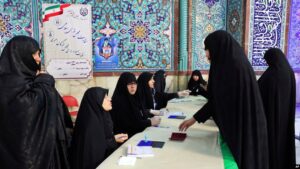
The Conservatives have won a majority of votes in the Iranian parliamentary elections, a number of Iranian media reported on Monday.
On March 4, the election commission completed the vote count in the elections to the country’s legislature. According to preliminary results, conservative candidates are leading in all provinces of Iran, including Tehran, local media reported.
The candidates will compete for 45 of the 290 seats in the parliament in the second round.
Approximately 25 million Iranian citizens took part in the March 1 elections to the country’s parliament and the Council of Experts. According to preliminary unofficial data, the turnout was approximately 41%.
A record number of candidates were allowed to participate in the parliamentary elections – more than 15.2 thousand people, which was almost 75% of the total number of candidates who initially registered. About 1.7 thousand of the candidates admitted to the elections are women.
According to the Iranian Constitution, five seats in the 290-seat parliament should go to representatives of religious minorities. 144 candidates competed for 88 seats in the Council of Experts, which elects the country’s Supreme Leader.
Many candidates who advocate reforms in Iran were banned from participating in the parliamentary elections, and some political figures, including former Iranian President Hassan Rouhani, were not allowed to run for the Council of Experts, Iranian media reported.
The first meeting of the newly convoked parliament will be held in late May.
Earlier, the Experts Club think tank made a video dedicated to the top 10 elections in the world this year. More detailed analysis is available at
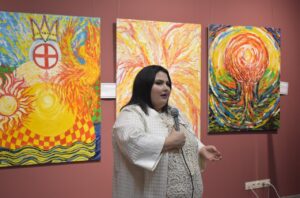
In Kyiv, the Experts Club training center in collaboration with Art Gallery Universe has launched a unique art therapy program aimed at helping people suffering from post-traumatic stress disorder (PTSD). As part of this initiative, an exhibition titled “Restoring Life: Art and Rehabilitation Project” was organized, where prominent Ukrainian artists such as Igor Moshkov and E-Ludmyla Svitla presented their works reflecting their personal experience of struggling with and rethinking the emotional states caused by PTSD.
Maksim Urakin, the initiator of Experts Club, emphasized the importance of the exhibition as an art therapy method for the correction of stressful conditions, including PTSD, especially in the context of the current challenges faced by many Ukrainians.
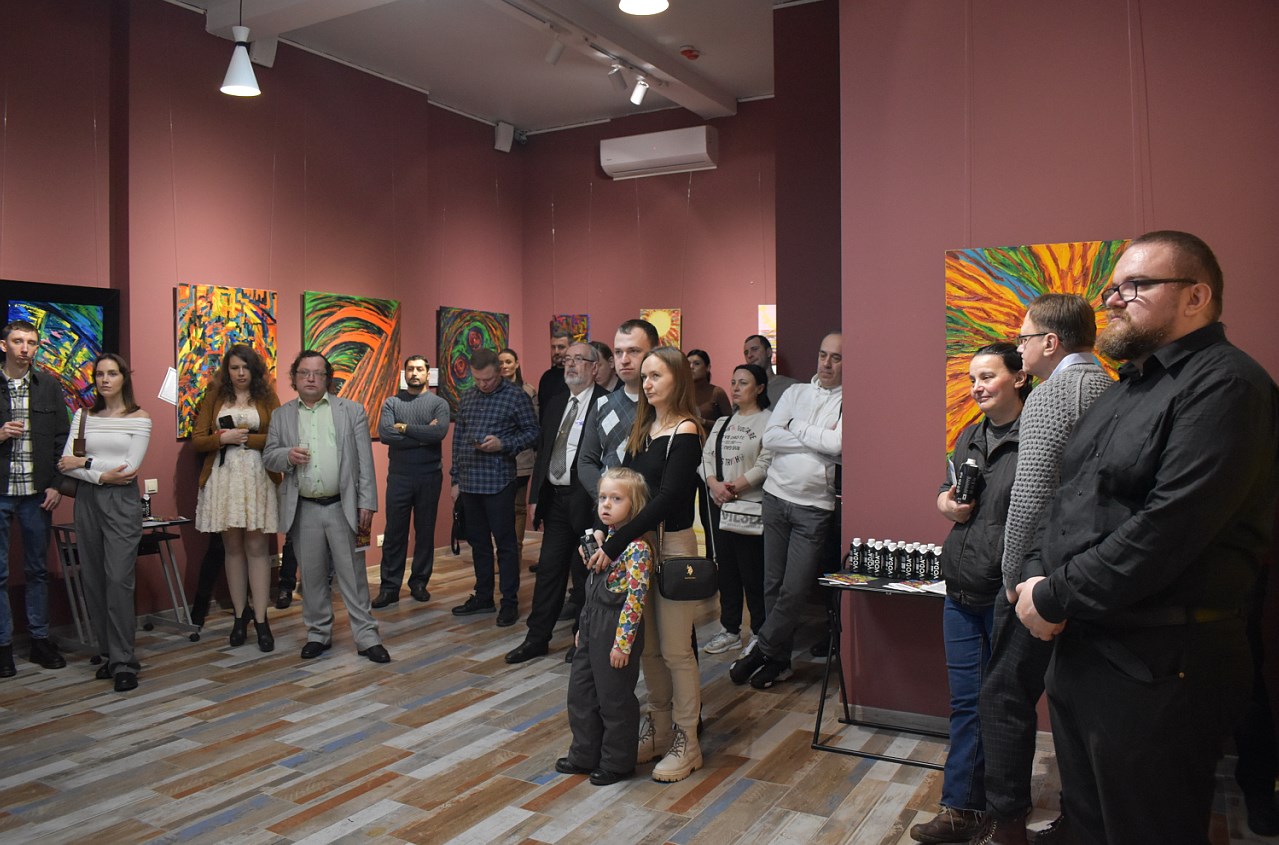
“This exhibition is more than art. It is an opportunity for visitors to experience healing and hope through painting, because the psycho-emotional state of many Ukrainians now needs support in the context of war and constant exposure to traumatic factors,” he said.
Lyudmyla Svitla, founder of Art Gallery Universe, shared her goal to encourage self-discovery and self-expression through art, considering it the key to inner peace.
Visitors of the exhibition shared their impressions, noting the deep emotional perception and personal meaning of each art object. The Restoring Life project highlights art not just as a means of aesthetic pleasure, but as an effective tool for spiritual healing and stress management.
Art therapy plays an important role in the treatment of PTSD and other stress-related disorders, as it allows individuals to express their feelings and experiences through art, which is often inaccessible through words. This form of psychotherapy helps reduce anxiety and stress, improves mood, and promotes emotional recovery. The inclusion of art therapy in rehabilitation programs for people with PTSD and other stress-related disorders can significantly increase their effectiveness by providing a unique approach to treatment and self-expression.
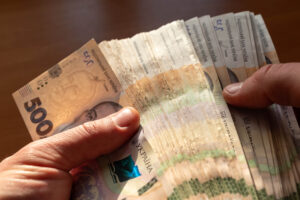
In 2023, Ukraine received external financing totaling $42.5 billion, of which $11.6 billion (27%) was non-repayable grant aid, the Ministry of Finance reported.
“Long-term concessional loan financing totaling $30.9 billion was attracted, in particular from the EU ($19.5 billion), the IMF ($4.5 billion), Japan ($3.4 billion), Canada ($1.8 billion), the UK ($1 billion), the World Bank ($660 million), and Spain ($50 million),” the report cites statistics on revenues.
Grant assistance was provided by the United States, Japan, Norway, Germany, Spain, Finland, Switzerland, Ireland, Belgium, and Iceland.
“Funds from the EU were raised as part of macro-financial assistance. Loans under the EU macro-financial assistance programs have a 35-year maturity (including a 10-year grace period), and the costs of servicing them are reimbursed by the EU,” the Ministry of Finance said.
As of the end of 2023, the weighted average cost of public and publicly guaranteed debt was 6.24%, which is 1.4 percentage points less than in the previous year, the Ministry added.
At the same time, the weighted average term to maturity of Ukraine’s public and publicly guaranteed debt increased by more than two years to 10.56 years last year.
In total, in 2023, the total amount of Ukraine’s public and publicly guaranteed debt increased by UAH 1,444 billion in hryvnia equivalent and by $33.9 billion in dollar equivalent, mainly due to an increase in long-term concessional financing from international partners.
As of December 31, 2023, Ukraine’s public and publicly guaranteed debt amounted to UAH 5.5 trillion, or $145.3 billion.
A detailed video analysis of the situation in the Ukrainian and global economy is available on the Experts Club YouTube channel – https://youtu.be/byJnfmie7bM?si=ZI410qh5NBA-jcpi
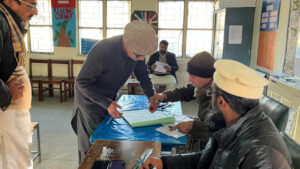
The results of last Thursday’s parliamentary elections in Pakistan have been summarized, with independent candidates, mostly affiliated with the party of former Prime Minister Imran Khan, who is serving a prison term, taking first place, Al Jazeera reports.
According to the Central Election Commission, out of 266 seats in the lower house of parliament (National Assembly) of Pakistan, 101 seats were won by independent candidates, 96 of them supported by the right-wing centrist party, the Justice Movement, founded by former Prime Minister Khan. However, after a court found Khan guilty on a number of charges, the Supreme Court and the CEC ruled that Khan’s supporters could only run as independent candidates and were prohibited from using party symbols.
The second place went to the party of former Prime Minister Nawaz Sharif, the Pakistan Muslim League, with 75 seats. The third place went to Bilawal Bhutto Zardari’s center-left Pakistan People’s Party with 54 seats.
It took more than 60 hours to count the votes. None of the parties achieved the required majority of 169 seats to form a government on their own.
On Friday, Sharif said that despite his failure in the parliamentary elections, he would try to form a coalition government. He had previously rejected the possibility of a coalition with other parties.
For 2024 – 2029, 336 seats are available in the National Assembly of Pakistan. In the 2024 elections, the number of seats was 266. Another 70 seats in the lower house of parliament are reserved for women and minority representatives. These seats are distributed among all parties.
The elections were held against the backdrop of a difficult economic situation in the country, as well as tensions in the border regions.
Earlier, the Experts Club information and analytical project included the 2024 elections in Pakistan in the list of the TOP-10 most important elections of 2024 for the whole world, see the video for more details at https://youtu.be/73DB0GbJy4M?si=pMUPbHSYKI8YrDFR

The article collects and analyzes the main macroeconomic indicators of Ukraine. In connection with the entry into force of the Law of Ukraine “On Protection of the Interests of Business Entities during Martial Law or a State of War”, the State Statistics Service of Ukraine suspends the publication of statistical information for the period of martial law, as well as for three months after its termination. The exception is the publication of information on the consumer price index, separate information on statistical indicators for 2021 and for the period January-February 2022. The article analyzes open data from the State Statistics Service, the National Bank, and think tanks.
Demographic indicators of Ukraine
Director of the Ptukha Institute of Demography and Social Studies of the National Academy of Sciences of Ukraine, Academician Ella Libanova, predicts that about 50% of citizens will return to Ukraine after the war ends. At the same time, Libanova believes that if the economy is restored to pre-war levels, Ukraine will not be able to return the projected 4.5 million citizens.
She also drew attention to the fact that, according to Eurostat, there are currently 4.2 million Ukrainian military migrants in the European Union.
Earlier, Libanova described depopulation and labor shortages as an inevitable scenario for Ukraine.
According to the estimates she presented at the Regional Economic Forum, as of the beginning of this year, the population in the government-controlled areas was 31.6 million people, and now it has slightly increased.
Libanova pointed out that the population forecast for the beginning of 2033 within the borders of 1991 Ukraine ranges from 26-35 million people.
Economic recovery
Ukraine’s real gross domestic product (GDP) growth slowed to 8.2% in the third quarter of 2023 compared to the same period last year.
The NBU, which has raised its overall GDP growth forecast for this year to 4.9%, estimates the direct positive contribution of a higher harvest at 1.3 percentage points.
“At the same time, the key risk for our economy remains a longer duration and intensity of the war, as well as a decrease in the volume or loss of rhythm of international assistance, the resumption of a significant electricity shortage due to further destruction of the energy infrastructure and other risks,” said Maksym Urakin.
Analysis of Ukraine’s foreign trade
Maksym Urakin also drew attention to the factor of the growing negative foreign trade balance, which has been observed since the beginning of the war.
“The negative balance of Ukraine’s foreign trade in goods in January-September 2023 increased by 3.2 times compared to the same period in 2022 – $19.402 billion. This means that the cost of purchasing the goods Ukraine needs is almost $20 billion more than the income from exporting Ukrainian goods to other countries,” said Urakin, PhD in Economics.
Ukraine’s financial situation in 2023
According to the expert, the main factors characterizing the state of the Ukrainian economy are public debt, international reserves, and inflation.
“As of September 30, 2023, Ukraine’s public and publicly guaranteed debt amounted to UAH 4,886.13 billion, or USD 133.62 billion. This is a slight decrease compared to the historical maximum set in August,” Maksym Urakin said.
The expert noted that the main risks to the economy remain the duration of the war and the instability of international aid.
“In the third quarter of 2023, Ukraine’s GDP growth slowed to 8.2%. The negative balance of foreign trade increased 3.2 times, which is an alarming signal. The public debt has slightly decreased compared to August figures, but in 2024 it may exceed the country’s GDP for the first time, which poses significant risks to economic stability,” the economist said.
Thus, the economic situation in Ukraine, according to the founder of the Club of Experts, continues to require close monitoring and adaptation of strategies in response to changing conditions. Macroeconomic indicators of Ukraine and the world were discussed in more detail in one of the video programs of the Experts club
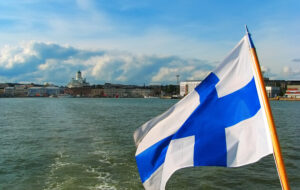
Voting in the presidential election in Finland ended on Sunday, with a voter turnout of 74.9%. Since none of the candidates received more than half of the votes, a second round of voting will be held on February 11 with the participation of Alexander Stubb and Pekka Haavisto, the Finnish edition of Yle reported on Sunday.
After counting 100% of the votes, former Prime Minister Aleksandra Stubb received 27.2% of the vote, and former Foreign Minister Pekka Haavisto 25.8%.
According to the country’s legislation, the president is elected for 6 years for no more than two consecutive terms, so Finnish President Sauli Niinistö will no longer be able to claim a third term in office, and a new, thirteenth head of state will come to power, whose term of office will begin on March 1, 2024.
Earlier, the Experts Club information and analytical project analyzed all the major elections scheduled for 2024, and you can learn more about the 2024 global elections in the video here: https://youtu.be/73DB0GbJy4M?si=rAMBZvZ4ozNmSr4v
Subscribe to the Experts Club channel: https://www.youtube.com/@ExpertsClub